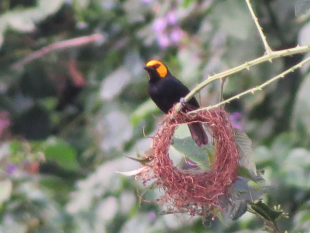Weaver species list / RELATED SPECIES: Black-billed Weaver / Black-chinned Weaver / Black-necked Weaver / Clarke’s Weaver / Lesser Masked Weaver / Little Weaver / Loanga Weaver / Slender-billed Weaver / Spectacled Weaver / Strange Weaver / Tanganyika Masked Weaver
IUCN: Least concern Discovery: 083
Categories: fruit, frogs, Ploceus 6: ‘Hyphanturgus’
Discovery
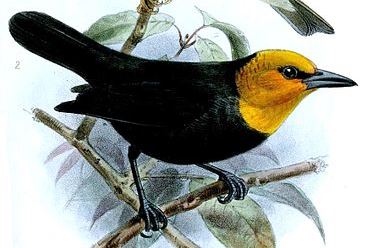

IntroductionThe Black-billed Weaver was formally described by George Ernest Shelley, an English geologist and ornithologist.The Black-billed Weaver was collected by Harry Johnston, a British explorer, botanist, and colonial administrator. Johnston climbed Mount Cameroon to collect explore and specimens. Burton and others had preceeded him, but Johnston found some new mammals and birds. He experienced a week of rain at 7350 feet (2.2 km) and then transferred his camp to Hunter’s Hut at 8300 feet (2.5 km), in “a narrow peninsula of forest which pushes up the mountainside”. Here he collected a female of the Black-billed Weaver, which Johnston thought was a male (the male was first collected a few years later). Johnston reached the summit of Mount Cameroon at 4km elevation, being the the fourth most prominent peak in Africa. Shortly after this expedition, in October 1886, the British government appointed him vice-consul in Cameroon and the Niger River delta area. The first illustration of the Black-billed Weaver was published by Shelley (1887) when he described the species. The next illustration to be published was a line drawing of the head published by Sharpe (1890), also of a female. Sharpe (1891) first illustrated a male. Scientific citationPloceus melanogaster Shelley 1887, Proc. Zool. Soc. London, p.126, Cameroon Mt., 8000 ft. Meaning of namesmelanogaster, Greek: melas, black; gaster, the belly. First English nameJohnston’s Yellow-headed Black Weaver (Shelley 1905). Alternate namesBlack Mountain Weaver, Jackson’s Yellow-headed Black Weaver, Johnston’s Yellow-headed Black Weaver, Uganda Black-billed Weaver, Yellow-faced Black Weaver. CollectorHarry Johnston. Date collectedSep 1886. Locality collectedMt Cameroon. Type specimensThe type is in the British Museum (BM 1887.3.7.34). |
The above is based on Weaver Wednesday 2, a weekly series about the discovery of each weaver species.
This species text first appeared as Weaver Wednesday [200] – Discovery [83]: Black-billed Weaver on 2016-04-13
1. Basic biology
The above is based on Weaver Wednesday, a weekly series about weaver species.
This species text first appeared as Weaver Wednesday [60]: Black-billed Weaver on 2013-08-07
2. Breeding facts
| Pair bond Monogamous Breeding season Nest site Nest building Colony size Clutch size Egg colour Egg size Incubation Chicks and nestling period |
Breeding information based on Handbook of the Birds of the World, Vol. 15.
3. Photos of Weaver Nests
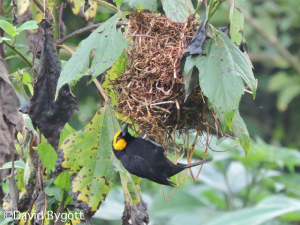 Vm 18666 |
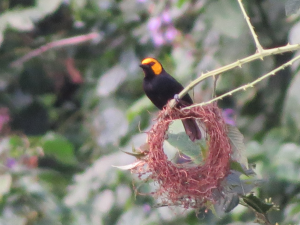 Vm 17608 |
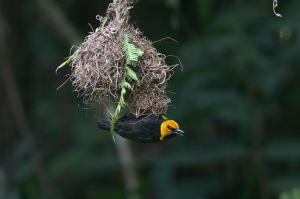 Vm 13808 |
 Vm 6901 |
 Vm 2474 |
Thumb-nails of recent PHOWN records

